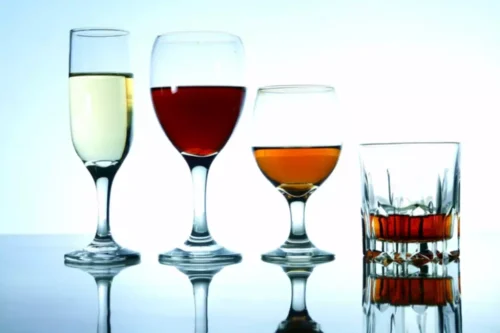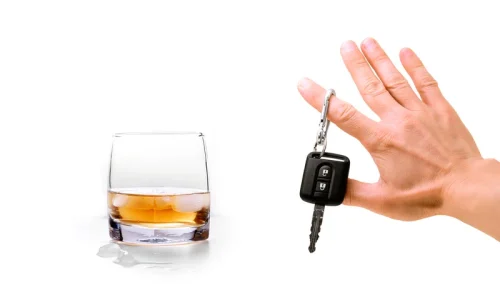
Alcohol aggravates symptoms of rosacea because drinking enlarges the body’s blood vessels. For those already suffering from redness due to rosacea, alcohol can worsen this symptom. There is a misconception that being an alcoholic will cause you to form a bulbous and red nose. That nose, sometimes called “drinker’s nose” or “alcohol nose” is actually known as rhinophyma, a side effect of rosacea. Please read on to learn all you need about alcoholic nose and the connection between alcohol addiction and skin conditions.

How Alcohol Affects Rosacea
If you or someone you love is struggling with alcohol abuse and addiction, The Recovery Village at Palmer Lake can help. Contact us today to learn more about treatment programs that can help you begin the journey to a healthier, alcohol-free future. However, alcohol use disorder is treatable with detox, inpatient rehab programs, and other treatment services.
Substance Abuse Treatment
However, alcohol addiction can cause a person to neglect their health, which can mean side effects on any pre-existing health conditions, including rosacea. Many doctors advise patients with rosacea to avoid drinking and cooking with alcohol, especially red wine for women, to avoid aggravating the skin condition. The most common side effect of rosacea in people who drink is flushed skin. With time, rosacea can worsen, and for people who drink alcohol heavily, this can mean developing rhinophyma. Alternatively, someone who suffers from alcohol addiction may feel like their rosacea is a constant, visible reminder of their struggles.
- It is important to remember this, since people with existing forms of rosacea are more predisposed to developing rhinophyma, which cannot be attributed to alcohol abuse.
- Join 40,000+ People Who Receive Our Newsletter Get valuable resources on addiction, recovery, wellness, and our treatments delivered directly to your inbox.
- Later, the nasal skin grows and the tip of the nose becomes larger.
- Despite this theory of alcohol abuse causing drinker’s nose, researchers never uncovered the cause of rhinophyma in these patients.
- This condition is significantly more common in men, especially between the ages of 50 to 70 years.
Treatment For Alcohol Use Disorder
With time, alcohol abuse can worsen rosacea and contribute to the development of rhinophyma (alcoholic nose). Before discussing potential treatment options for alcoholic nose, it is important to understand whether or not alcohol itself is truly to blame. As it turns out, drinking alcohol (even in excessive amounts) has not been proven to directly cause rosacea. Rosacea is a chronic skin condition that causes a red rash on the face. Contact Zinnia Health today to learn more about our alcohol addiction treatment programs. We offer various services, including alcohol rehab, detox, individual therapy, and group counseling.
Alcohol Addiction Treatment
Seeking treatment for alcoholism and addressing the underlying causes of rhinophyma can help improve both physical and emotional well-being. The condition manifests as redness and a visibly bulbous nose, where the nose becomes larger, more prominent, and rounder in shape. As health care research found, rhinophyma is not directly attributed to alcohol.
- The condition may also produce problems with a person’s eyes and eyelids as well as vision problems.
- Alcohol might contribute to rosacea and rhinophyma, but the substance doesn’t seem to cause the conditions in the first place.
- Yet chronic alcohol abuse can worsen the condition (rosacea), which leads to drinker’s nose when left untreated.
- Rhinophyma is the skin condition which causes a person’s nose to grow and become bulbous in appearance.
- Adding to this myth is the term “whiskey nose,” which comes from the way people would drink whiskey.
So-called “drinker’s nose” is a common way to describe what is known as rhinophyma. Rosacea is a skin condition that is characterized by red cheeks or red patches on the face along with visible blood vessels. In some cases, chronic alcohol abuse can cause a purple or reddish hue to the nose due to the dilation of blood vessels and skin discoloration. This discoloration is often a sign of underlying health issues and should prompt individuals to seek medical attention and consider treatment for alcohol addiction. It was previously thought that excessive alcohol consumption was the cause of rhinophyma, hence the nickname alcoholic nose or drinkers nose.

Alcohol Detox: Guidelines for Successfully Detoxifying from Alcohol
Alcohol use disorder and skin conditions like rosacea are connected because of the potential for alcohol to worsen existing skin conditions. Alcohol abuse can lead to serious health problems, so getting help why do alcoholics have weird noses is crucial if you think you or a loved one may have a problem. There are many treatment options available, and with the assistance of a medical professional, you can develop a plan that’s right for you.
- Many patients don’t realize the toxicity of prolonged alcohol abuse and how it affects the body.
- This occurs when the skin of the nose has become bulbous enough to constrict the natural airways of the nose.
- The dangers of alcohol are clear, but do you know what happens when you consume alcohol?
- While there is no cure for rosacea, treatments are available to keep the symptoms under control.
- As it turns out, drinking alcohol (even in excessive amounts) has not been proven to directly cause rosacea.
- The inflammation causes broken blood vessels and bumps both on and around your nose.
Unfortunately, if left untreated, rhinophyma can obstruct the nostrils and affect breathing, deeming a medical evaluation worthwhile. This common name and years of misinformation from the medical community about the condition prompted a false link between alcohol abuse and alcoholic https://ecosoberhouse.com/ nose. Because of this, people who drink a lot or increase their alcohol intake over time and also have rosacea may experience increased side effects — including alcoholic nose. In the early stages of drinker’s nose, these symptoms will be mild to moderate in form.

